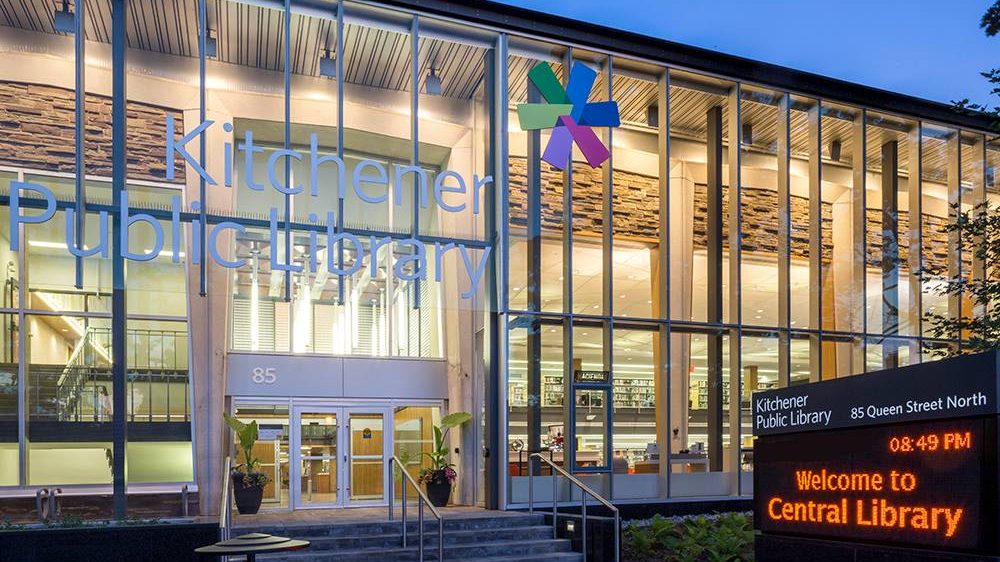Favourite stories of 2021: Gyms adapt to virtual business model
Posted Dec 28, 2021 09:00:00 PM.
As 2021 winds down, our editor Blair Adams, is looking back at some of his favourite stories from the past year.
The following was published by James Sebastian-Scott on May 6.
*************************
A Waterloo gym has recently made a tough decision to close its physical location and turn it into a virtual business after 15 years of serving the community.
Fitness 360 for Women made that decision after suffering through yet another stay-at-home order in the province.
Kerri Hallman is the owner of Fitness 360 for Women and in a recent interview with 570 NEWS said because her lease was coming up for renewal, she made the tough decision to close the doors of the brick-and-mortar location.
“Part of my whole issue is that we've been here so long and we're a pillar in the community, people know where we are, women know where to go to feel comfortable in a space where it's comfortable, but I just couldn't do it after the recent events and the past year,” she said.
The Canadian Federation of Independent Business said Tuesday that gyms have been closed for 326 days throughout the pandemic.
Hallman said she'll be teaching the online classes from her own home gym and they're available through a private Facebook group where members can join in live or whenever else they choose. She says there are already hundreds of classes saved offering workouts ranging from weights to cardio, stretch, yoga, and pilates.
This raises the question of whether or not we will see more and more gyms shift their business models to offer virtual classes to be more sustainable for the future, and to help build a secondary model for business owners.
Kim Dawson is a Professor in Sport and Exercise Psychology at Wilfrid Laurier University and she said that she commends businesses in physical fitness for pivoting to still offer services to their clients.
“I totally understand making the decision and saying that they can't continue the rolling lockdowns (…) I applaud the individuals in the fitness facilities and industry for finding a way to make it work virtually. That's what I'm hopeful for. We've done virtual because we've had to by omission and not being able to go to the gym. As we've evolved, we've gotten better at it. We know how to do structured classes better, provide knowledge better and I can only hope that the whole delivery program is going to get better particularly if gyms say it's going to be their mode of delivery.”
Dawson believes there is still much work to be done to make virtual classes comparable to how a gym would offer services at a brick-and-mortar location.
“I think the fitness industry is the first one to say 'this is what we're doing and this is how we are going to manage it and mitigate it'. It will be interesting to see the success or not the success when they take that choice and start going in that direction.”
Dawson said that we're going to start seeing more of a hybrid model being offered to clients for the future.
“Before the pandemic, you started to see a lot of the bigger clubs that needed to be more versatile. For example, they started to offer in-person studio classes or you could come into the studio and do the virtual class yourself, and do a spin class by the push of a button. We were already starting to see a little bit of that. The industry is going to be expanding in terms of on-site, person-to-person, onsite-virtual, and virtual-virtual classes being offered. I bet we're going to start seeing some peer leadership in it too. We are going to see small breakout groups as well,” she said.
“It's really interesting because all of our research that has been done on exercise behaviour has been done a year ago before the pandemic,” she said, “what we know to be true, isn't true anymore. What we do know previously is that social support is a huge component of having individuals adhere to an exercise program. Structured classes do that and increase the rate of people being able to comply, adhere, and do it.”
Dawson said that the effect that virtual classes versus the opportunity to walk into a gym is dependent on the person and what they prefer. Some people may like the virtual experience because it saves them time, but others might need interaction or a distraction.
“It will come down to what physical activity means to individuals. If it's just the physical activity then that's very easy to do in a virtual environment. If it means so much more to you about the social connections, the engagement, distraction, and about trying to get these different feel-good things, then the virtual component isn't going to be everything that you need it to be.”
Dawson is excited for when the research catches up about where the industry is heading and what some business owners have had to do to ensure they could still operate during the pandemic. She said it's going to be really interesting data to look at.
“I love seeing people take their fitness classes outside in front of their facilities, or parks. Virtual was just one way that the industry shifted. Everybody listened to the public health guidelines and really worked in with what they were capable of doing. That's what I marvel at. Even when we had slow closures and we were allowed to have anywhere from 10-25 people in facilities, everyone just kept adjusting understanding how important physical fitness was and trying to provide that opportunity for people to be involved.”
She notes that because the industry is on a third shift, everyone is handling it differently.
“Everyone is in a different place psychologically about getting through it (…) even from a business and financial standpoint I can only guess where people are by having to ride this roller coaster.”
Dawson said that the physical fitness industry always fought technology and trying to encourage people to get off their screens and go outside to get their physical activities in. Now, it's become more acceptable to do physical activity that involves a screen and technology to do it.
“Now with all of the things that are available and the wonderful workouts, it's morphing in real-time trying to understand what it actually means in a virtual environment from a physical fitness and activity standpoint. Right now, I'm just encouraging anybody to do anything that works for them (…) let's just keep moving this body because now is the time we need it more than ever so whatever mode of delivery we can find that is successful for us, then just do it.”
The future of how gyms will introduce more virtual workouts is not really clear but the pandemic has put an extra focus on fitness-oriented business owners to look at their business models and adapt.
– With files from Casey Taylor








